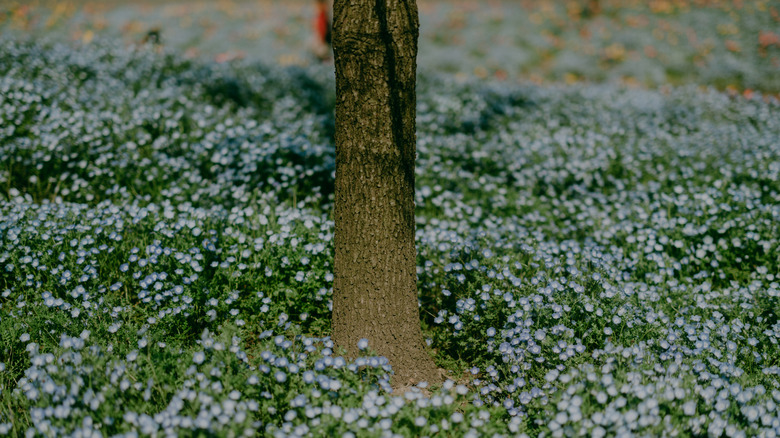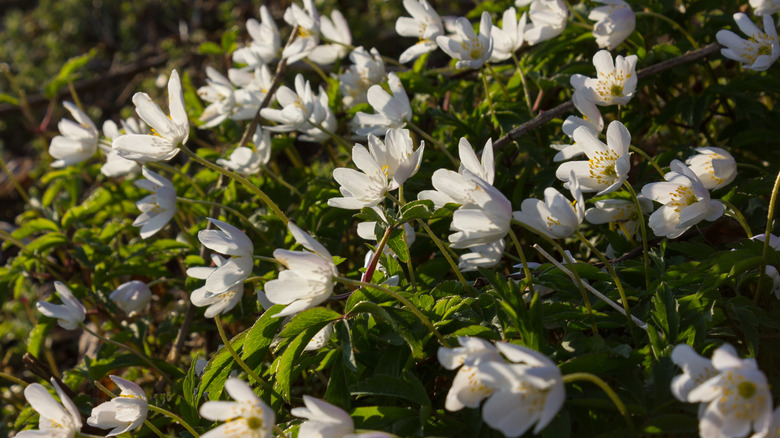The Flowering Ground Cover That's Ideal For Planting Under A Tree Or Shrub
Variety is the spice of life, so it's nice to have a variety of species to choose from when choosing flowering ground cover plants. For landscape design purposes, it's especially helpful to be able to choose from a wide range of colors. You'll likely find the variety you seek in the 109 species of the Anemone genus, many of the flowers in which are also known as windflower. Among all species of anemone, you'll find red, pink, blue, yellow, purple, and white flowers, along with three types that would enable you to attain a variety of blooming times if you planted all three. Rhizomatous anemones, like Anemone 'Red Riding Hood', bloom in the spring. Fibrous roots characterize the second type and enable them to gradually spread. Japanese anemone (Anemone x hybrida), another popular species, is in this category. Those that grow from tubers, like Greek windflower (Anemone blanda), comprise the third category and are among the blue-flowering spring bulbs to plant in fall.
A species well suited as a ground cover, Anemone canadensis, in the rhizomatous category, is among the ground covers you should plant in late summer for beautiful fall color. This species grows to 12 to 24 inches tall and can piggyback nicely off a tall deciduous tree's needs for sun and rainfall when planted under it. This anemone is easy to care for, attracts pollinators, and is deer- and rabbit-resistant.
Plant Anemone canadensis as a gorgeous ground cover
Anemone canadensis, also known as meadow anemone, does best when planted in the late summer or spring in sun to partial shade. You can do so using plant plugs or seeds in moist, well-drained soil. Gorgeous cup-shaped white flowers bloom from April to June, and the plant's foliage is lush.
This anemone can be an aggressive spreader via its rhizomes, and works well in spots where the spreading tendency is beneficial. The plant has no serious pest or disease issues, but it can get leaf spot, downy mildew, powdery mildew, and rust. Flea beetles, caterpillars, and slugs are known to prey on the plant. Be sure to learn all you can about the common pests and diseases that cause damage to anemone flowers. The tall stems of Anemone canadensis may flop over in spots that lack sun. This plant is hardy in USDA Hardiness zones 2 to 9 and can be divided from mid-spring to early fall.
Be aware that some anemone species are mildly to moderately toxic if consumed and can even cause reactions through skin contact. Touching the plant can result in blistering, while ingesting it can irritate your mouth and cause stomach upset.

